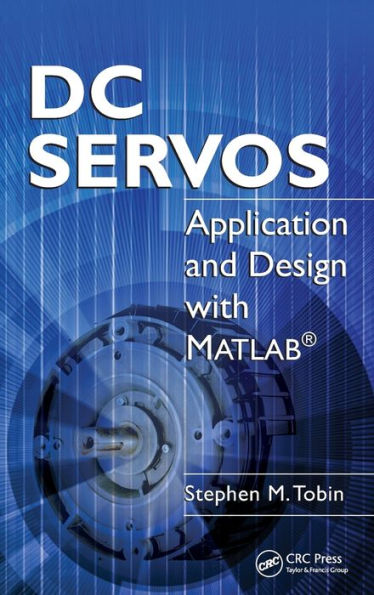DC Servos: Application and Design with MATLAB® is designed and written with this problem in mind. It breaks down the practical knowledge required from the various branches of applied science—electrical and mechanical engineering, analog electronics, mechanics, control theory, digital electronics, embedded computing, and firmware design—into a cohesive and usable framework. Today, DC servos are working around the world in countless applications—CD players, ink-jet printers, robots, machining centers, vending machines, eyeglass manufacturing machines, home appliances, and automotive seat positioners, just to name a few.
This book balances coverage of theoretical and practical aspects of application and design of DC servomechanisms. It also provides detailed coverage of feedback transducers, particularly the application of optical encoders to real systems. It covers how to use the MATLAB® Control System Toolbox specifically for servo design, to make the design process faster and more interactive. It also presents two complete, bench-tested reference designs that can be duplicated using readily available parts, so you can build your own servo and see it in action.
Author Stephen M. Tobin is an expert in motion control and electro-optical instrumentation and a respected consultant in the medical device and manufacturing automation communities. In order to instill confidence in the engineers, scientists, students, and hobbyists designing the ever more complex machines of the 21st century, Tobin guides the reader on a short journey through "servo school," imparting his lifelong passion for motion control along the way.
DC Servos: Application and Design with MATLAB® is designed and written with this problem in mind. It breaks down the practical knowledge required from the various branches of applied science—electrical and mechanical engineering, analog electronics, mechanics, control theory, digital electronics, embedded computing, and firmware design—into a cohesive and usable framework. Today, DC servos are working around the world in countless applications—CD players, ink-jet printers, robots, machining centers, vending machines, eyeglass manufacturing machines, home appliances, and automotive seat positioners, just to name a few.
This book balances coverage of theoretical and practical aspects of application and design of DC servomechanisms. It also provides detailed coverage of feedback transducers, particularly the application of optical encoders to real systems. It covers how to use the MATLAB® Control System Toolbox specifically for servo design, to make the design process faster and more interactive. It also presents two complete, bench-tested reference designs that can be duplicated using readily available parts, so you can build your own servo and see it in action.
Author Stephen M. Tobin is an expert in motion control and electro-optical instrumentation and a respected consultant in the medical device and manufacturing automation communities. In order to instill confidence in the engineers, scientists, students, and hobbyists designing the ever more complex machines of the 21st century, Tobin guides the reader on a short journey through "servo school," imparting his lifelong passion for motion control along the way.

DC Servos: Application and Design with MATLAB®
220
DC Servos: Application and Design with MATLAB®
220Hardcover

Product Details
| ISBN-13: | 9781420080032 |
|---|---|
| Publisher: | Taylor & Francis |
| Publication date: | 10/13/2010 |
| Pages: | 220 |
| Product dimensions: | 6.10(w) x 9.20(h) x 0.70(d) |
